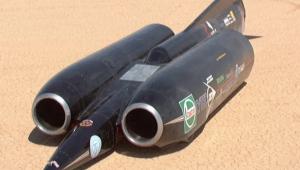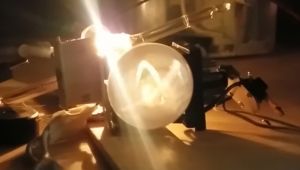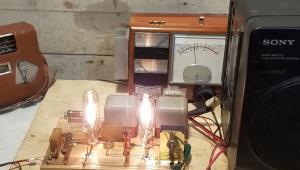The Sounds of Mars

Sound on Mars is significantly different from sound on Earth. Sound, of course, relies on a medium such as an atmosphere for its propagation. And the atmosphere on the surface of Mars is only 1 percent as dense as Earth's. Still, there are definitely sounds there. As NASA noted, “The discrepancy between the sounds on Earth and Mars would be less dramatic than, for example, someone's voice before and after inhaling helium from a balloon.”
The Mars Polar Lander (1999) and the Phoenix lander (2008) had microphones, but the former crashed during landing and the microphone on the latter was turned off before landing because of technical problems. The InSight lander (2018) recorded the “sound” of Martian wind, but that wasn't a true audio recording. Rather, it was data from a sensor that was manipulated to create a sonic track.
Perseverance has two acoustic microphones onboard, with very ambitious plans. Perhaps the most dramatic sounds will come from the microphone mounted on the side of the rover. This EDL (entry, descent and landing) microphone will attempt to document the sounds of the complex landing sequence. It may capture the sounds of pyrotechnic devices as they fire to release the parachute, the sound of the spacecraft whistling through the Martian atmosphere, and the sound of the roaring engines as the rover's descent stage flies away.
Unfortunately, according to NASA, this microphone was fashioned from “easily available, store-bought hardware” and although the sounds it hears will be tremendously cool, the microphone frankly provides limited scientific value. It is not expected to last long after the perilous landing. If it does, the microphone might also relay the sounds of rover's wheels crunching along the surface. Another cool sound would be that of a small helicopter drone, named Ingenuity, as it takes flight.
The other microphone is mounted on the SuperCam instrument atop the rover's mast. It could hear natural atmospheric sounds such as the gentle rustle of wind, and possibly the howls of dust devils passing by. It will also be used to capture sounds of the rover's laser as it turns rock into plasma. The vaporizing process will create a "popping" shock wave that the microphone will capture. Analysis of the sound from the vaporized rocks will give clues on the hardness of the rock, which can help determine, for example, whether the rock was formed in a lake or from wind-driven material, and how much pressure was involved in its formation.
Using the mast, the SuperCam microphone can be moved toward and pointed in the direction of particular sound sources. In the same way that a mechanic leans down to listen to your car's engine to diagnose a problem, the microphone could be moved closer to listen to a faulty piece of gear on the rover, possibly giving scientists a clue as to what's gone wrong.
Honestly, I am pretty excited about Perseverance, and what sounds it might capture for us. You can read more about the mission here. NASA will provide live coverage (delayed by the transit time of signals from Mars to Earth) beginning at 11:15 am PST. As noted, landing is scheduled at approximately 12:55 pm PST (3:55 pm EST). It may take several days for NASA to unpack all the data and provide a full visual and audio recreation. But we should know pretty quickly whether or not Perseverance was able to stick the landing. Of course, after that, the real mission begins.
It's interesting to consider that humans (except possibly in an emergency situation) will never directly hear sounds in the Martian atmosphere with our own ears. And, meanwhile, until we arrive, Mars will only be inhabited by robots. At least they have eyes and ears.





























































